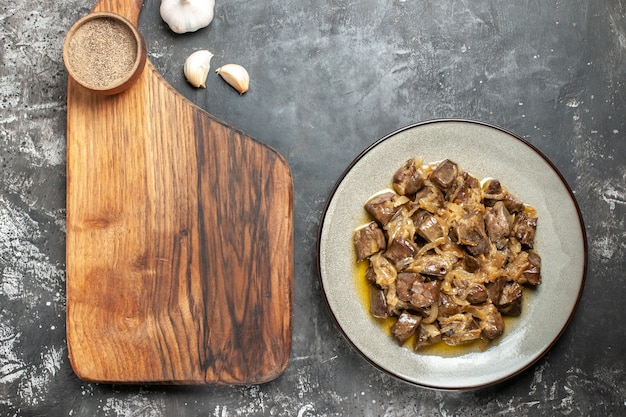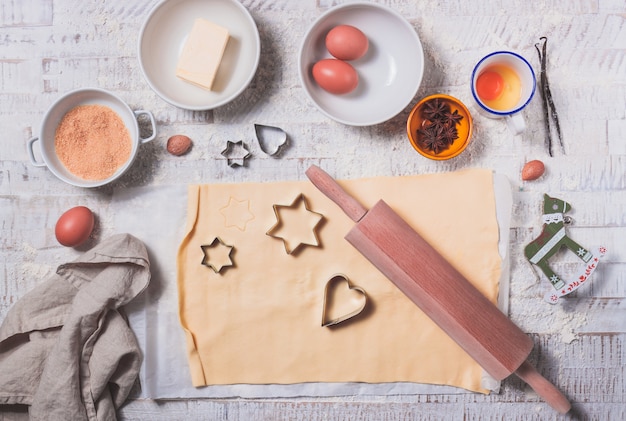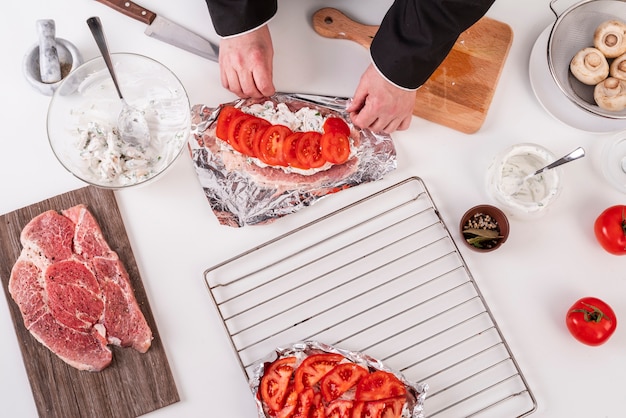Let's be honest, the thought of eating a deer heart might give some people pause. It's an organ, after all! But I'm here to tell you, it's a culinary treasure waiting to be discovered, especially for those who love venturing beyond the usual cuts of meat. As an avid hunter, I've always believed in utilizing every part of the animal, and the deer heart, with its rich flavor and tender texture, is a real prize. So, if you're ready for an exciting culinary adventure, let's dive into the fascinating world of cooking deer hearts together.
(Part 1) The Magic of Deer Heart

Deer heart is a lean and flavorful cut of meat that deserves a place on your dinner table. Its delicate flavor, often likened to beef, has an alluringly subtle gamey note that adds a touch of the wild. The texture is also something special – it's firm but melts in your mouth, unlike the chewy texture of some other organ meats. Let's dive deeper into this intriguing ingredient and uncover its many secrets.
Why Choose Deer Heart?
You might be wondering, why bother with deer heart? Well, it's a sustainable choice. Utilizing every part of the animal is a responsible practice, and the heart is a delicious and nutritious part of the whole. It's also incredibly versatile, lending itself to various cooking methods and recipes. You can roast, grill, sauté, or even braise it. It's a blank canvas for culinary creativity!
A nutritional powerhouse
Beyond its unique flavor, deer heart is a powerhouse of nutrients. It's a good source of protein, iron, and B vitamins, making it a healthy and wholesome choice. It's also low in fat and calories, perfect for those who are conscious of their diet. Plus, it's a good source of creatine, a natural compound known to boost muscle mass and performance. Pretty impressive for an organ, right?
(Part 2) From Field to Feast: Preparing the Deer Heart

So, you've got a deer heart in your hands. Now what? The first step is preparation. This is crucial for removing any unwanted elements and ensuring the heart is ready for culinary magic. Let's break down the process step by step.
The Cleansing Ritual
After retrieving the heart, the first step is to clean it thoroughly. I always start by rinsing it under cold water, making sure to remove any visible debris. Next, using a sharp knife, carefully remove any excess fat or connective tissue. This is where having a butcher's knife comes in handy, as it's designed for precision and ease. Remember, the key is to be gentle; you don't want to damage the delicate heart.
The Trim
Next, we need to trim the heart. This step is about removing the large blood vessels and the outer membrane. You'll want to use a sharp knife for this, and a cutting board is a must. I find that trimming the heart with the point of the knife works best, allowing for a clean and precise cut. You'll easily spot the large blood vessels and can remove them along with the outer membrane.
(Part 3) Choosing Your Method: cooking styles for Deer Heart

With your deer heart prepped and ready, the fun begins! You have a whole world of cooking methods at your disposal, each bringing its own unique flavor and texture. Let's explore some of the most popular options and see what sparks your culinary creativity.
Searing for a Crispy Exterior
One of my personal favorites is searing. This method creates a beautiful, crispy exterior while locking in the juices. You can achieve this on a hot skillet or a cast iron pan, and it's a great way to add a smoky flavor. I usually season the heart with salt, pepper, and a little bit of paprika before searing it.
Slow Braising for Tenderness
If you're seeking a more tender and flavorful dish, try braising. This method involves cooking the heart in a liquid, such as red wine, broth, or even beer, over low heat for a long period. It allows the connective tissue to break down, resulting in a succulent and melt-in-your-mouth texture. Plus, the liquid infuses the heart with rich flavors, creating a symphony of taste.
Roasting for a Hearty Meal
For a hearty meal, roasting is a classic way to cook deer heart. You can roast it whole or cut it into smaller pieces. Season it liberally with herbs and spices, then place it in a preheated oven until cooked through. Roasting allows the heart to develop a lovely crust and a deep, roasted flavor, perfect for a satisfying meal.
Grilling for a Smoky Flavour
If you're a fan of grilling, you're in for a treat. Deer heart grills beautifully, taking on that signature smoky flavor. Just make sure your grill is hot and the heart is well-seasoned before putting it on.
The Versatile Sauté
Sautéing is a quick and easy way to cook deer heart. Cut the heart into bite-sized pieces, then cook them in a hot pan with butter or oil. You can add vegetables, herbs, or spices to your liking. This method is perfect for a quick weeknight dinner or a light appetizer.
(Part 4) Flavour Fusion: The Art of Seasoning
You've chosen your cooking method, but the flavour journey doesn't end there. Seasoning is crucial for elevating the deer heart's flavour profile. Think of it as a painter adding colour to a blank canvas. Here's where your creativity truly shines. Let's explore some of my go-to seasoning combinations.
Classic and Simple
A simple combination of salt and pepper is always a winner. It allows the heart's natural flavour to shine through. Sometimes, all you need is a little bit of black pepper, a pinch of salt, and a touch of garlic powder for a classic and delicious flavour.
Herbs and Spices
For those seeking a more complex flavour, consider using herbs and spices. I love using thyme, rosemary, and oregano for a Mediterranean twist. For a bit of heat, add a pinch of cayenne pepper or chili flakes. For an Asian touch, I like to use ginger, garlic, and soy sauce. Experiment with different combinations and let your taste buds guide you!
Fruit Fusion
Don't be afraid to experiment with fruits! A touch of sweetness can complement the gamey flavour of deer heart beautifully. I’ve been known to add a bit of orange zest, lemon juice, or even a spoonful of jam to my dishes. The sweetness of the fruit balances the richness of the heart, creating a delightful harmony of flavors.
(Part 5) Recipes: The Deer Heart Cookbook
Now, for the moment you've all been waiting for – the recipes! I've been cooking deer heart for years, and I've accumulated quite a collection of recipes, each a testament to the versatility of this unique ingredient. These are some of my personal favourites, tried and tested, and guaranteed to impress.
Deer Heart Steaks with Rosemary and Garlic
This is a simple and elegant dish that showcases the heart's delicate flavour. The rosemary and garlic add a touch of earthy flavour that complements the heart beautifully. You'll need:
- 1 deer heart, cleaned and trimmed
- 1 tablespoon olive oil
- 1 teaspoon salt
- ?? teaspoon black pepper
- 2 cloves garlic, minced
- 1 tablespoon chopped rosemary
Instructions:
- Preheat oven to 350 degrees F (175 degrees C).
- Heat the olive oil in a large skillet over medium-high heat.
- Season the deer heart with salt and pepper.
- Add the deer heart to the skillet and sear for 2-3 minutes per side.
- Transfer the deer heart to a baking dish.
- In the same skillet, sauté the garlic and rosemary for 1 minute.
- Pour the garlic and rosemary mixture over the deer heart.
- Roast for 20-25 minutes, or until the heart is cooked through.
Braised Deer Heart with Red Wine and Mushrooms
This dish is perfect for a cozy winter evening. The red wine adds a rich and complex flavour to the heart, while the mushrooms provide a satisfying earthy counterpoint. You'll need:
- 1 deer heart, cleaned and trimmed
- 1 tablespoon olive oil
- 1 onion, chopped
- 2 cloves garlic, minced
- 1 cup red wine
- 1 cup beef broth
- 1 cup sliced mushrooms
- 1 teaspoon dried thyme
- Salt and pepper to taste
Instructions:
- Heat the olive oil in a large dutch oven over medium-high heat.
- Add the deer heart and sear for 2-3 minutes per side.
- Remove the heart from the pot and set aside.
- Add the onion and garlic to the pot and cook until softened, about 5 minutes.
- Pour in the red wine and beef broth, and bring to a boil.
- Add the deer heart back to the pot, along with the mushrooms and thyme.
- Reduce heat to low, cover, and simmer for 2-3 hours, or until the heart is fork-tender.
- Serve hot, garnished with fresh parsley.
Grilled Deer Heart with Spicy Mango Salsa
For a taste of the tropics, try this grilled deer heart with spicy mango salsa. The mango salsa adds a refreshing sweetness and a hint of spice that complements the smoky flavour of the grilled heart. You'll need:
- 1 deer heart, cleaned and trimmed
- Salt and pepper to taste
- 1 ripe mango, diced
- ?? red onion, diced
- 1 jalapeno pepper, seeded and diced
- 1 tablespoon lime juice
- 1 tablespoon chopped cilantro
- Salt and pepper to taste
Instructions:
- Preheat grill to medium-high heat.
- Season the deer heart with salt and pepper.
- Grill the heart for 5-7 minutes per side, or until cooked through.
- While the heart is grilling, prepare the mango salsa.
- Combine the mango, red onion, jalapeno pepper, lime juice, and cilantro in a bowl.
- Season with salt and pepper to taste.
- Serve the grilled deer heart topped with the mango salsa.
(Part 6) cooking tips and Tricks
Now that you've got some recipes under your belt, let's delve into some helpful tips and tricks that I've learned over the years. These tips will elevate your deer heart cooking game and ensure a delicious outcome.
Don't Overcook It
Deer heart is lean, so it can dry out if overcooked. Aim for medium-rare to medium doneness. You can check for doneness by using a meat thermometer – 145 degrees F (63 degrees C) is the recommended temperature. Remember, the heart is more delicate than a standard steak, so treat it with care and avoid overcooking.
Rest the Heart
After cooking, let the heart rest for 5-10 minutes before slicing or serving. This allows the juices to redistribute, resulting in a more tender and flavorful dish. Imagine it as a moment of relaxation for the heart after all that cooking.
Don't Be Afraid to Experiment
Cooking is all about experimentation. Don't be afraid to try new combinations of herbs, spices, and sauces. You never know what flavour combinations you might discover! Remember, the more you cook, the more confident you'll become.
Use a Meat Thermometer
As I mentioned earlier, using a meat thermometer is crucial for ensuring the deer heart is cooked to perfection. It's a simple tool that guarantees food safety and helps you avoid overcooking. Invest in a good quality meat thermometer, and you'll be a pro in no time!
(Part 7) The "Don'ts" of Deer Heart Cooking
Just like any other ingredient, there are some things you should avoid when cooking deer heart. These tips are crucial for ensuring the best results and a delicious meal.
Don't Overcrowd the Pan
When searing or sautéing deer heart, avoid overcrowding the pan. This will prevent the heart from browning properly and will also release excess moisture, leading to a less flavorful dish. Instead, cook in batches if necessary, ensuring each piece has enough space to cook evenly.
Don't Skip the Resting Time
As mentioned earlier, resting the heart after cooking is crucial. It allows the juices to redistribute, ensuring a tender and juicy dish. Skipping this step will lead to a dry and tough heart. So, be patient and let it rest! It's worth the wait.
Don't Use Too Much Salt
Deer heart is already quite flavorful. Over-salting it can overwhelm the delicate flavour of the meat. Instead, start with a small amount of salt and add more to taste as you go. Taste as you cook and remember, less is more!
Don't Be Afraid to Ask for Help
If you're new to cooking with deer heart, don't be afraid to ask for help from experienced hunters or chefs. They can offer valuable tips and advice on preparation and cooking methods. Remember, there’s no shame in seeking guidance!
(Part 8) Deer Heart Beyond the Plate: A culinary journey
Cooking deer heart is more than just a recipe – it's a journey. It's about connecting with the natural world, appreciating the bounty of the hunt, and exploring the versatility of this unique ingredient. It's about venturing beyond the ordinary and discovering new culinary possibilities. It’s also about sharing the experience with friends and family, creating memories and forging bonds over a delicious meal.
Beyond the Wild
Even if you're not a hunter, you might be able to source deer heart from a local butcher or game processor. It's becoming increasingly popular in farm-to-table restaurants and gourmet shops. Just make sure you inquire about the source of the heart and ensure it’s sourced ethically.
The Art of Sharing
Once you've mastered the art of cooking deer heart, share your knowledge and passion with others. Encourage them to try something new and experience the unique flavours of this often-overlooked ingredient. It's a great way to spark conversations, expand palates, and appreciate the richness of the culinary world.
FAQs
Now, let's address some commonly asked questions about deer heart cooking.
1. Is it safe to eat deer heart?
Yes, deer heart is safe to eat as long as it's properly handled and cooked to the correct internal temperature. It's important to clean the heart thoroughly and remove any excess fat or connective tissue before cooking. It's also crucial to cook it to an internal temperature of 145 degrees F (63 degrees C) to ensure food safety.
2. How do I know if a deer heart is fresh?
A fresh deer heart will have a firm texture and a bright red colour. It should also have a mild, gamey odour. If the heart is discoloured, has a foul smell, or feels slimy, it’s likely spoiled and should be discarded.
3. What are the best ways to store deer heart?
To maintain its freshness, you can store the deer heart in the refrigerator for up to 3 days. It can also be frozen for up to 3 months. Make sure you wrap it tightly in plastic wrap or aluminum foil before storing. This will help prevent freezer burn and preserve its quality.
4. What can I do with leftover deer heart?
Leftover deer heart can be used in a variety of dishes. It’s great in stews, soups, or even as a filling for tacos. You can also slice it thin and add it to salads for a protein boost. It's a versatile ingredient that can be incorporated into many culinary creations.
5. What are some other wild game meats I can try?
If you enjoy the taste of deer heart, you might enjoy other wild game meats, such as venison, elk, or rabbit. These meats have unique flavours and textures, and they're all excellent sources of protein. Don't be afraid to experiment and discover your favourites!
I hope this guide has inspired you to explore the world of deer heart cooking. It's a delicious and unique ingredient that deserves a place in your culinary repertoire. So, grab a deer heart, put on your chef's hat, and get ready for an exciting and flavourful adventure!
Everyone is watching

Perfect Rice Every Time: The Ultimate Guide to Cooking Rice
Cooking TipsAs a self-proclaimed foodie, I've always been a bit obsessed with rice. It's the foundation of countless cuisi...

Prime Rib Roast Cooking Time Chart: Per Pound Guide
Cooking TipsPrime rib roast. Just the name conjures images of lavish dinners, crackling fires, and hearty laughter. It’s ...

The Ultimate Guide to Cooking Asparagus: Tips, Techniques, and Recipes
Cooking TipsAsparagus. The mere mention of this spring delicacy conjures up images of vibrant green spears, crisp and burs...

Ultimate Guide to Cooking the Perfect Thanksgiving Turkey
Cooking TipsThanksgiving. Just the word conjures up images of overflowing tables laden with delicious food, the scent of r...

How Long to Bake Potatoes in the Oven (Perfect Every Time)
Cooking TipsBaked potatoes are a staple in my kitchen. They're incredibly versatile, delicious, and surprisingly easy to m...
